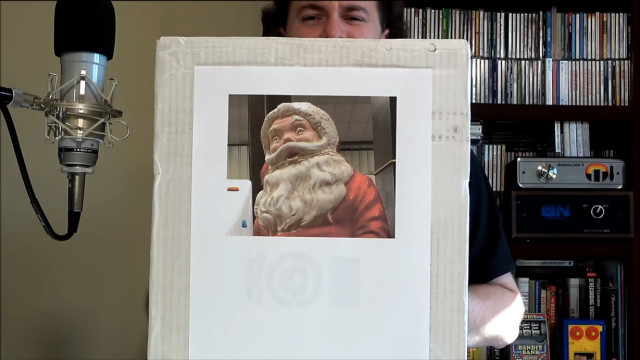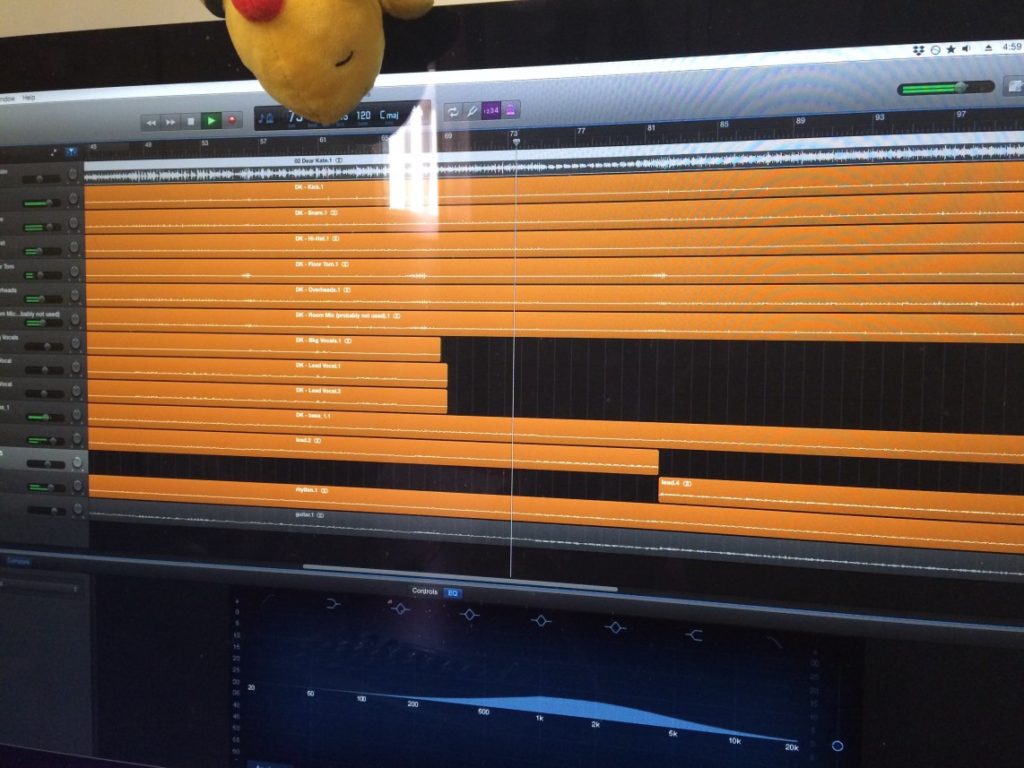Well Ben, You’re Always the Same
- Posted by mariteaux on March 13th, 2021 filed in Modding
- Comments Off on Well Ben, You’re Always the Same
So towards the end of last month, I started hinting that I had been in talks with a YouTuber I’ve mentioned on this here Scratchpad in potentially getting at some of his old song stems. That YouTuber was Ben Minnotte, the Oddity Archive guy, and someone who I’m a very big fan of indeed.

“Dear Kate”, one of the songs off his last record Minn-Knot, I’ve liked even long before I knew much about his musical pursuits. Ben’s voice will always be the sticking point for people, but honestly, I like the mix of it all. I like the classic rock vibe, I like the guitar licks, I like the extended instrumental break, and unlike the rest of his albums, it’s actually not terribly rickety sounding (pays to have people who can navigate the tempo drops on hand).
So after the last installment of Ben’s Music “Career” came out, and after he put some of the original CD copies of Minn-Knot up for sale, and after I snagged one (because Ben CDs are such a hot commodity, I was afraid they’d be gone before I got to them), I got to thinking about maybe using “Dear Kate” for a custom, potentially one of the ten bonus song slots in marfGH (whenever that comes out).
Of course, I don’t chart on mixed audio–I hate it, I’ve never released a single of my efforts to do so, and I will always refuse to–so I needed the multitracks. Knowing Minn-Knot was recorded digitally, and knowing Greetings From Elderbush Gulch‘s projects were still in Ben’s possession, I figured Minn-Knot‘s would likely still be extant too. I just needed Ben’s permission and assistance, and to my surprise, he was game for it! In about a week, I’d had the full, unmixed, dry, unmastered multitracks for that song in my hands.
Some of my experiences from this one…
Mixing and mastering
I first pulled together a rough mix of the instrument parts as something to chart on, and then I later went back and remixed all the audio, trying to get the stereo image a little closer to the CD mix of the song and also reverse-engineering some of the effects. Notably, Ben’s (lead) vocal has a fake “double-track” effect on it which he told me was from a tape delay plugin. Alas, GarageBand has no tape delay quick enough to simulate it, so I simply duplicated the tracks and put them a few hundred milliseconds out of sync and that seemed to simulate it well enough.

I also had to do (by my standards) a lot of EQ to get certain things to exist happily in the mix. Notably, the dry kick track was totally inaudible, so I had to EQ the low-mids to get the attack of the beater to jump out. Apparently, I was overcompensating because I then had to turn it back down when I was assembling the final instrument parts, as I did the vocals and also the solo, which seemed more squeezed and “forwards” than the rest of the lead guitar track.
I also had a go with a theory I’ve had for a while now about a better way to get the in-game audio at the proper volume. Normally, I set the average volume of the tracks to -14db or so and then limit, but I’d always ended up with a whole lot of nasty whispering and clipping as a result. GH2 has a vols array in the songs.dta file which I figured I could use to boost things non-destructively, but alas, vols does not work when set to positive values. It can only turn stuff down, not up.
I just gave this one a more gentle normalization and limiting treatment and then half a decibel of headroom, and it seemed to sound fine, thankfully.
Charting (lots and lots of charting…)
This chart takes the cake for the most transcriptions and moving parts I’ve ever had to assemble into a single chart. You see, “Dear Kate” has two prominent guitar parts, meaning I thought this would be a great opportunity to see how a lead/rhythm custom comes together as opposed to my usual guitar/bass customs. Well, in short, it’s a lot more work. I had to do:
- Lead
- And rhythm, naturally
- An amalgamation of the lead and rhythm parts for singleplayer guitar (which also necessitates an additional mix so the parts that aren’t being played can exist on the band backing track instead)
- Bass for animations
- Drums for animations and also the practice mode drum machine
So in total, five instrument transcriptions, three of which have all four difficulties charted, and two of which are for animation purposes. I also had to chart fretmapping for authenticity’s sake; while I don’t know how to play this song or anything, I know the rhythm part is pretty much all open chords, meaning top of the neck stuff. That helped a bit, and then I just went my usual “if it squeals, it’s at the bottom of the neck” for solo stuff. (And then I had to piece the lead and rhythm fretmapping together for the singleplayer chart in REAPER, as I forgot to do that in FeedBack.)
Some miscellaneous testing
I did give onyxite’s vocal file generator a go to little avail. Some people in MiloHax have this garbage notion that the vocal file (which is how the singer’s mouth moves in GH2, as opposed to the MIDI “puppet” control in GH1) makes a “game-quality custom”, when really, it’s a weak effect that often doesn’t render anyway on account of LOD meshes. Still, I have a dry vocal for this one, so I gave it a go…and it’s still kinda meant for Rock Band anyway, because it also wanted a valid RB MIDI, which I don’t have. As a result, no vocal file for this one. Maybe someday.
I also encountered a rather boneheaded Harmonix decision last night as I was testing the chart out in all the different modes. Though it says in practice mode that you can practice “lead” and “rhythm”, it’s a mislabeling; you can actually practice singleplayer guitar and rhythm. That meant another re-encode of the practice mode audio to get the right guitar part in there so the chart would match–how fun!

But all in all, it really wasn’t as hard as I was expecting–more a lot of work than anything truly puzzling. As far as songs.dta goes, it mostly looks for a rhythm channel mapping instead of a bass channel mapping in determining if a song is a lead/rhythm or guitar/bass custom, so that’s good to know.
I feel like two weeks of working on it on-and-off is a long time, yet given that my going record is two years or so, it was actually a fairly speedy process. Here’s a video of it, and the downloads are on my Guitar Hero modding page as always. Very pleased to have this one done, very pleased by the result.
Beyond that, really just trying to keep the number of month-old outstanding projects down. This is one, and I just finished up a post on Letters you’ll be seeing on April 1st (some of you can guess what it’s about already). Aaaaand WordPress 5.7 left some big honking fucking layout issues on this blog theme, so I gotta figure out what, if anything, I can do there. Still, rock(?) time!
